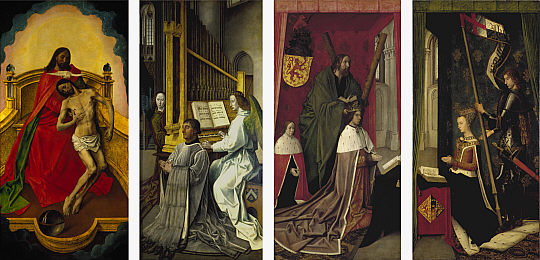
The history of popular religion in Scotland includes all forms of the formal theology and structures of institutional religion,[1] between the earliest times of human occupation of what is now Scotland and the present day. Very little is known about religion in Scotland before the arrival of Christianity. It is generally presumed to have resembled Celtic polytheism and there is evidence of the worship of spirits and wells. The Christianisation of Scotland was carried out by Irish-Scots missionaries and to a lesser extent those from Rome and England, from the sixth century. Elements of paganism survived into the Christian era (see: folk religion). The earliest evidence of religious practice is heavily biased toward monastic life. Priests carried out baptisms, masses and burials, prayed for the dead and offered sermons. The church dictated moral and legal matters and impinged on other elements of everyday life through its rules on fasting, diet, the slaughter of animals and rules on purity and ritual cleansing. One of the main features of Medieval Scotland was the Cult of Saints, with shrines devoted to local and national figures, including St Andrew, and the establishment of pilgrimage routes (see: folk saints). Scots also played a major role in the Crusades. Historians have discerned a decline of monastic life in the late medieval period. In contrast, the burghs saw the flourishing of mendicant orders of friars in the later fifteenth century. As the doctrine of Purgatory gained importance the number of chapelries, priests and masses for the dead within parish churches grew rapidly. New "international" cults of devotion connected with Jesus and the Virgin Mary began to reach Scotland in the fifteenth century. Heresy, in the form of Lollardry, began to reach Scotland from England and Bohemia in the early fifteenth century, but did not achieve a significant following.
The Reformation, carried out in Scotland in the mid-sixteenth century and heavily influenced by Calvinism, amounted to a revolution in religious practice. Sermons were now the focus of worship. The Witchcraft Act 1563 made witchcraft, or consulting with witches, capital crimes. There were major series of trials in 1590–91, 1597, 1628–31, 1649–50 and 1661–62. Prosecutions began to decline as trials were more tightly controlled by the judiciary and government, torture was more sparingly used and standards of evidence were raised. Seventy-five per cent of the accused were women and modern estimates indicate that over 1,500 persons were executed across the whole period. Scottish Protestantism in the seventeenth century was highly focused on the Bible, which was seen as infallible and the major source of moral authority. In the mid-seventeenth century Scottish Presbyterian worship took the form it was to maintain until the liturgical revival of the nineteenth century with the adoption of the Westminster Directory in 1643. The seventeenth century saw the high-water mark of kirk discipline, with kirk sessions able to apply religious sanctions, such as excommunication and denial of baptism, to enforce godly behaviour and obedience. Kirk sessions also had an administrative burden in the system of poor relief and a major role in education. In the eighteenth century there were a series of reforms in church music. Communion was the central occasion of the church, conducted at most once a year, sometimes in outdoor holy fairs.
Industrialisation, urbanisation and the Disruption of 1843 all undermined the tradition of parish schools. Attempts to supplement the parish system included Sunday schools. By the 1830s and 1840s these had widened to include mission schools, ragged schools, Bible societies and improvement classes. After the Great Disruption in 1843, the control of relief was removed from the church and given to parochial boards. The temperance movement was imported from America and by 1850 it had become a central theme in the missionary campaign to the working classes. Church attendance in all denominations declined after World War I. It increased in the 1950s as a result of revivalist preaching campaigns, particularly the 1955 tour by Billy Graham, and returned to almost pre-war levels. From this point there was a steady decline that accelerated in the 1960s. Sectarianism became a serious problem in the twentieth century. This was most marked in Glasgow in the traditionally Roman Catholic team, Celtic, and the traditionally Protestant team, Rangers. Relations between Scotland's churches steadily improved during the second half of the twentieth century and there were several initiatives for cooperation, recognition and union. The foundation of the ecumenical Iona Community in 1938 led to a highly influential form of music, which was used across Britain and the US. The Dunblane consultations in 1961–69 resulted in the British "Hymn Explosion" of the 1960s, which produced multiple collections of new hymns. In recent years other religions have established a presence in Scotland, mainly through immigration, including Islam, Hinduism, Buddhism and Sikhism. Other minority faiths include the Baháʼí Faith and small Neopagan groups. There are also various organisations which actively promote humanism and secularism.
- ^ Richard W. Santana, Gregory Erickson, Religion and Popular Culture: Rescripting the Sacred (London: McFarland, 2008), ISBN 0786435534, p. 4.